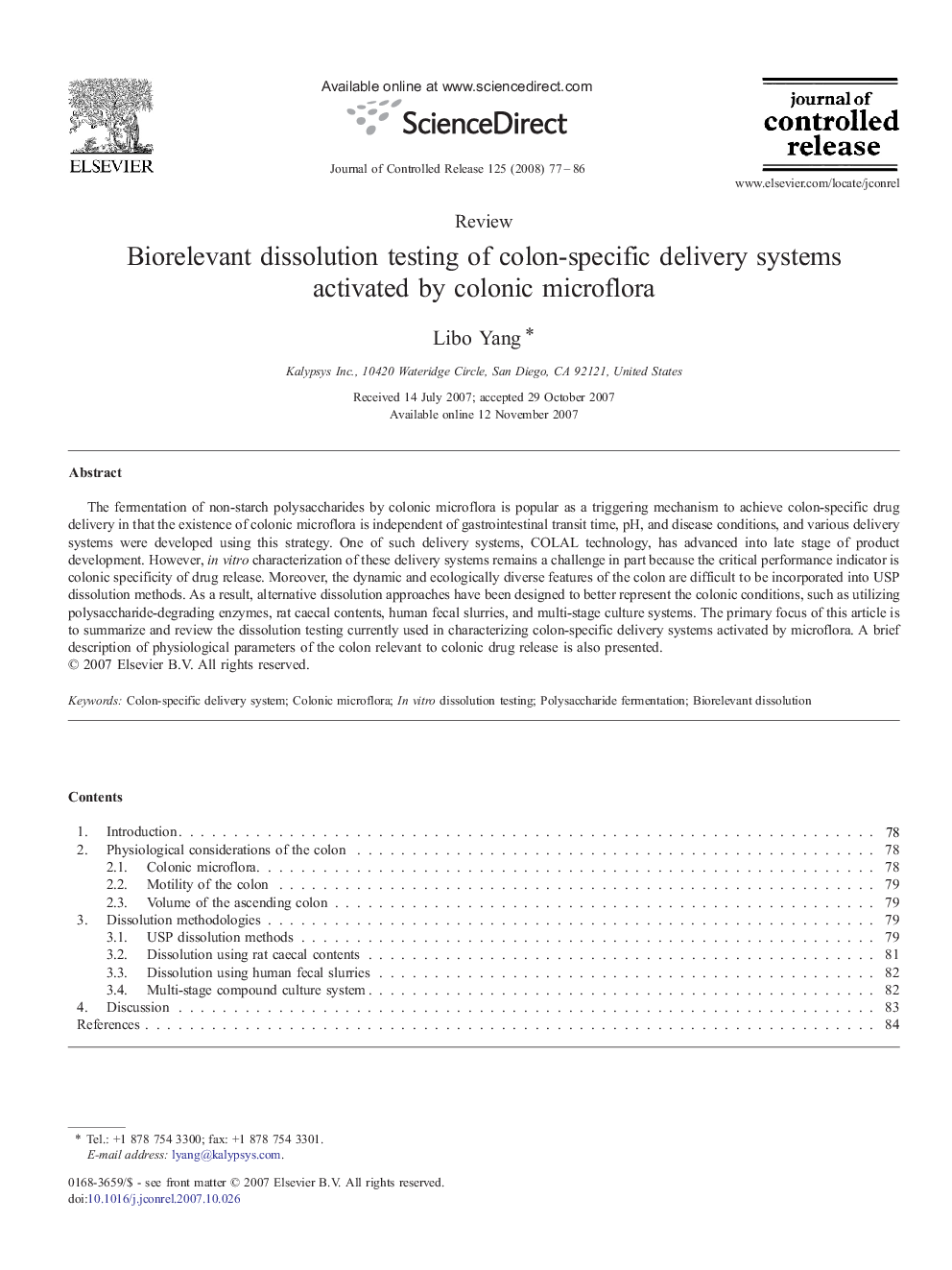| Article ID | Journal | Published Year | Pages | File Type |
|---|---|---|---|---|
| 1426804 | Journal of Controlled Release | 2008 | 10 Pages |
The fermentation of non-starch polysaccharides by colonic microflora is popular as a triggering mechanism to achieve colon-specific drug delivery in that the existence of colonic microflora is independent of gastrointestinal transit time, pH, and disease conditions, and various delivery systems were developed using this strategy. One of such delivery systems, COLAL technology, has advanced into late stage of product development. However, in vitro characterization of these delivery systems remains a challenge in part because the critical performance indicator is colonic specificity of drug release. Moreover, the dynamic and ecologically diverse features of the colon are difficult to be incorporated into USP dissolution methods. As a result, alternative dissolution approaches have been designed to better represent the colonic conditions, such as utilizing polysaccharide-degrading enzymes, rat caecal contents, human fecal slurries, and multi-stage culture systems. The primary focus of this article is to summarize and review the dissolution testing currently used in characterizing colon-specific delivery systems activated by microflora. A brief description of physiological parameters of the colon relevant to colonic drug release is also presented.
